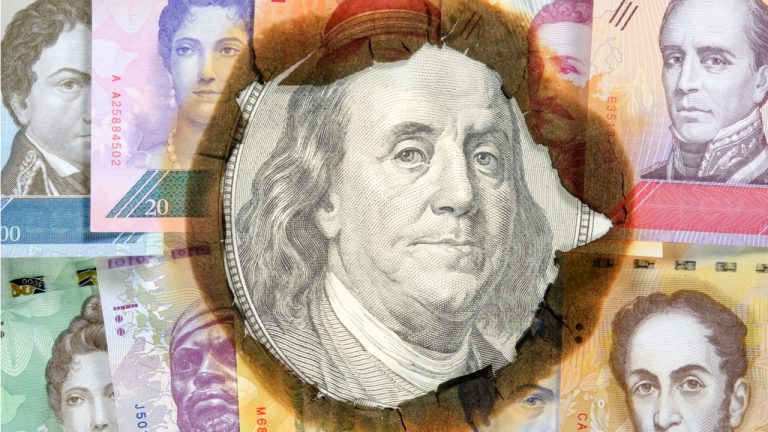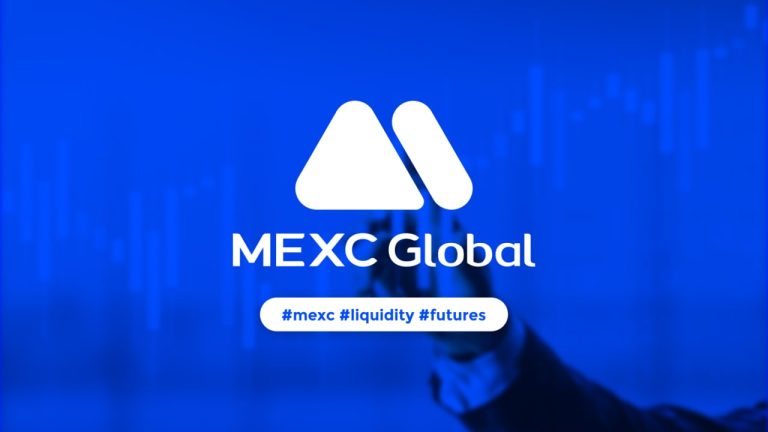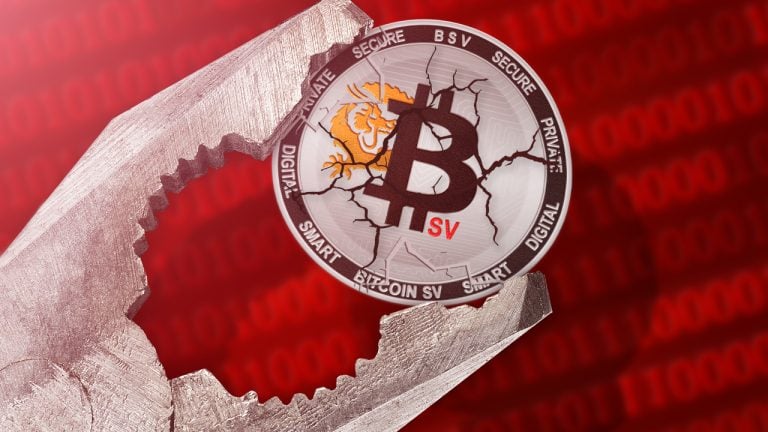 The Venezuelan fiat currency, the bolivar, has lost almost 40% in its exchange rate against the U.S. dollar in a month. According to reports, the seasonal payments that the government has to make, and the lack of liquidity of the government to intervene in the currency market are part of the equation leading to this, […]
The Venezuelan fiat currency, the bolivar, has lost almost 40% in its exchange rate against the U.S. dollar in a month. According to reports, the seasonal payments that the government has to make, and the lack of liquidity of the government to intervene in the currency market are part of the equation leading to this, […]
Two weeks after its initial pledge for Merkle Tree-backed proof of funds, Binance releases its official response to liquidity transparency.
Two weeks after Binance initially pledged to develop a proof-of-reserve (PoR) mechanism in response to the FTX liquidity and bankruptcy fiasco, it published its official response.
In an announcement on the Binance website, the exchange outlined how users can use the mechanism to verify its holdings. Currently, the only token available to verify through the Merkle Tree-based system is Bitcoin (BTC), though the announcement says additional coins will be added in the coming weeks.
It also highlighted upcoming transparency updates which include the involvement of third-party auditors to audit its PoR results and implementation of ZK-SNARKs in its PoR methods, among others.
Days after Binance announced its intention for PoR, it released the public details of its wallet addresses and on-chain activity.
Binance CEO Changpeng “CZ” Zhao tweeted about the latest update. Naturally, the Twitter community responded and many with positive comments towards the transparency efforts.
This is a great initiative. Perhaps a stand-alone page for Proof of Reserves where users can see all the exchange holdings (updated daily) could be on the roadmap for the future.
— Chief (@satn) November 25, 2022
However, some still had questions as to whether Binance auditing itself is the most efficient way of being transparent.
Related: Proof-of-reserves: Can reserve audits avoid another FTX-like moment?
Binance was one of the first following the FTX to start a trend of releasing proof of funds. Bybit released its reserve wallet addresses on Nov. 16, a week after the initial incident, along with other major exchanges such as Bitfinex, OKX, KuCoin and Crypto.com.
Both Huobi and Gate.io came under fire after publicizing their information which included loaned funds. The cryptocurrency investment product provider Grayscale Investments said it is hesitant to release wallet addresses due to security concerns.
On Nov. 10 Chainlink Labs offered PoR auditing services to exchanges across the space, as a solution to trust issues starting to pop up for centralized exchanges.
Market tracker CoinMarkCap shared on Nov. 22 that it added a new feature, which is a PoR tracker for exchanges who have publicized the information.
 A 6-year veteran of the crypto industry, Andrew Weiner serves as the Vice President of MEXC Global. As the former executive of RegTech and digital identity pioneer iComplyKYC, he worked with notable brands that include Thomson Reuters, ComplyAdvantage, IBM, Mastercard, Deloitte, and KPMG to deliver innovative solutions to Virtual Asset Service Providers in over 170+ […]
A 6-year veteran of the crypto industry, Andrew Weiner serves as the Vice President of MEXC Global. As the former executive of RegTech and digital identity pioneer iComplyKYC, he worked with notable brands that include Thomson Reuters, ComplyAdvantage, IBM, Mastercard, Deloitte, and KPMG to deliver innovative solutions to Virtual Asset Service Providers in over 170+ […]
FTX won’t be getting a bailout from Tether who confirmed it isn’t planning to provide a cash injection despite the CEO reportedly reaching out to multiple firms for help.
Cryptocurrency exchange FTX has lost at least one potential rescuer as it battles to fill a reported multi-billion dollar hole in its balance sheet.
The CTO of stablecoin issuer Tether, Paolo Ardoino on Nov. 10 confirmed the company does not have “any plans to invest or lend money to FTX/Alameda.”
Tether does not have any plans to invest or lend money to FTX/Alameda. Full stop.
— Paolo Ardoino (@paoloardoino) November 10, 2022
Ardoino’s comments came after a Nov. 10 report from Reuters suggested that FTX is now at a $9.4 billion shortfall, with FTX CEO Sam Bankman-Fried reaching out to multiple companies seeking cash to keep the exchange afloat.
According to the report, Tether, crypto exchange OKX and venture capital firm Sequoia Capital are some of the companies Bankman-Fried has approached for funds, reportedly asking for $1 billion or more from each of the firms.
Tether’s CTO response appears in line with the sentiment from a Nov. 9 blog post from Tether which assured the community it has no exposure to Alameda or FTX.
The stablecoin issuer has also been reported to have frozen 46,360,701 USDT owned by FTX in its Tron blockchain wallet on Nov. 10 to comply with law enforcement.
It is not currently understood whether OKX or Sequoia Capital is considering support for the embattled exchange.
However, Lennix Lai, director of financial markets at OKX previously told Reuters on Nov. 9 that Bankman-Fried asked for up to $4 billion from the exchange to help cover FTX liquidity issues, though didn’t confirm if the company would assist FTX.
Meanwhile, on Nov. 10, Sequoia zeroed out its nearly $214 million worth of investments into FTX marking them as a complete loss saying FTX’s liquidity issues “created a solvency risk” but added it wouldn’t have a large impact on the company.
Crypto exchange Kraken was also reportedly approached by FTX according to two unnamed sources as reported by Axios on Nov. 10 but it was not said if any deal was reached by the two parties.
Cointelegraph contacted OKX, Kraken, Sequoia Capital, and FTX for comment but did not immediately receive a response.
Related: Genesis Trading reveals $175M of funds are locked in FTX
So far, FTX appears to only be able to continue limited withdrawals through a deal with the Tron blockchain allowing its assets to be swapped 1:1 with external wallets. The agreement caused Tron-based tokens to trade at a premium of up to 1200% on the platform as users rush to find an exit from the exchange.

Exciting times lead to exciting posts, many of which bring up valid questions, and maybe some less valuable answers.
Events are unfolding fast as the cryptocurrency market is rocked again, this time by FTX. Facts and non-facts are hard to sort out under these conditions, especially since both seem to be depegged from believability at times. “Where’s the money?” and “Who’s to blame?” are popular talking points. Some of the information appearing is indisputably false, or at least highly speculative.
The situation has given rise to the opportunity to tell wild tales, such as this tweet that appeared (and disappeared) on Nov 10:

Rumors are not always harmless, as became clear when Tether experienced instability due to “evidence” that FTX and Alameda were trying to short the stablecoin. Tether denied having any exposure to Alameda or FTX.
The current status of withdrawals from FTX has also been a source of confusion, possibly because the status of withdrawals remains confusing in real life. FTX is not using “the normal process of queueing withdrawals,” an observer said, and there are a variety of potential causes.
There are a few scenarios here:
— Steven (@Dogetoshi) November 10, 2022
1. They're prioritizing friends and family
2. They found a backer
3. Rouge employee free for all
1/ Multiple people have pointed out that the "withdrawals" - which seems to have started again - from @FTX_Official are towards addresses that look ...almost fishy?https://t.co/x4IaEECd0a
— Jason Choi (@mrjasonchoi) November 10, 2022
Meanwhile, some FTX employees may not be receiving their salaries:
Receiving dozens of messages from FTX employees similar to this:
— Autism Capital (@AutismCapital) November 10, 2022
"Please do not harass us. We had no idea of what was going on. We were getting paid through Crypto and on our FTX account. We have no access to our money. We have been asking Sam about our salary but no answer."
Anon tip-off in DMs.
— DeFiyst (@DeFiyst) November 10, 2022
Seems like a reasonable explanation until proven otherwise... pic.twitter.com/XA4TGUw0Ls
FTX CEO Sam “SBF” Bankman-Fried warned employees that they might have to wait, according to a leaked FTX internal communication. There is plenty of room for irregularity here, and at least one potential scandal arose, only to be quickly denied:
*VERIFY*: "Dirty secret is that FTX and ramnik were secretly paying jai bhavnani and other rari guys under the table to build tooling and protocols and sybil as many airdrops as possible across both aptos and sui while having them constantly pump both chains to unknowing retail."
— Autism Capital (@AutismCapital) November 10, 2022
Not once have I considered launching a protocol on Aptos or Sui.
— Jai (@Jai_Bhavnani) November 10, 2022
Much less with a token. Didn’t turn out so well my first time.
Bhavnani is the founder of decentralized finance protocol Rari Capital, which was hit by a $10 million hack last year.
In an informational environment of this type, it is tempting to think out loud and in public.
tabasco imploded alameda by being as degen as 3AC & LUNA and got FIRED... sam & caroline been in damage control since... am i the only one who thinks this?
— Foresight Potentials ♟️ Microdosed Capital (@polymath_gray) November 9, 2022
It may be reasonably assumed that the finger-pointing, self-justification and soul-searching has only just started. SBF has apologized profusely and publicly. Meanwhile, newly reelected Minnesota Representative Tom Emmer claimed “reports to my office” indicate SBF and Securities and Exchange Commissioner Gary Gensler were working together to “obtain a regulatory monopoly.”
Galaxy Digital CEO Michael Novogratz probably had a significant insight when he pointed to SBF’s magnetism and fashion sense.
"Does it feel illegal? We'll see. It certainly seems immoral. I'm furious actually," says @novogratz on @SBF_FTX. "This is a tale as old as time. Some young charismatic guy in Bermuda shorts with the floppy hair charmed the 20 best investors and regulators in the world." pic.twitter.com/4a495VK8mt
— Squawk Box (@SquawkCNBC) November 10, 2022
“This is a tale as old as time,” Novogratz said. His company has $77 million of FTX exposure.

Neither FTX CEO Sam Bankman-Fried nor any FTX official has provided its users with clarity as to why FTX’s website was taken down.
Financially-troubled crypto exchange FTX has brought its website back online following a period of intermittent downtime — with the trading platform now sporting a banner confirming withdrawals are halted and advising users against depositing.
The FTX website returned online at approximately 9:00 pm UTC on Nov. 9, after encountering five separate periods of network downtime spanning over two hours, according to the “IS IT DOWN OR JUST ME” website.
The crypto community on Twitter has also noticed a new bright red banner that can be seen throughout the website that reads:
“FTX is currently unable to process withdrawals. We strongly advise against depositing.”

A pinned message on the official FTX Telegram Group on Nov. 8 also confirmed the halting of withdrawals, without any estimates about when they would return.
"We are waiting for confirmation from our team to ramp it up. Right now we dont have an ETA but surely will communicate it as soon as we have it," a member of FTX support staff wrote in the message.
Attempting to sign up for a new account on the website also comes with an alert that “signups are paused” at this current time, Cointelegraph has discovered.
This suggests that deposits, while “strongly advised against,” are only accessible to those who have existing accounts on the trading platform.
Meanwhile, two websites linked to the crypto exchange including Alameda Research and FTX Ventures remain down at the time of writing.
Related: Binance’s victory over FTX means more users moving away from central exchanges
It comes amid an ongoing liquidity crisis being faced by the crypto exchange.
A Nov. 9 report from the Wall Street Journal claims that the exchange is facing a shortfall of $8 billion, and is unable to meet withdrawal demands without emergency funding.
Binance initially signed a non-binding letter of intent to buy out the embattled exchange but pulled out less than 48 hours later, citing the mishandling of customer funds and alleged U.S. agency investigations as the reasons for its change in decision.
Google search results for “FTX website” also saw a large spike over the last few hours following the reports that the FTX website was intermittently going down, according to Google Trends:

 On Oct. 31, 2022, the publicly-listed bitcoin miner Argo Blockchain revealed the firm’s attempt to obtain $27 million in a scheduled financing deal fell through. According to the company’s October update, Argo said it did not believe the deal “will be consummated” and now two market analysts have downgraded the company’s shares. Argo Blockchain’s $27 […]
On Oct. 31, 2022, the publicly-listed bitcoin miner Argo Blockchain revealed the firm’s attempt to obtain $27 million in a scheduled financing deal fell through. According to the company’s October update, Argo said it did not believe the deal “will be consummated” and now two market analysts have downgraded the company’s shares. Argo Blockchain’s $27 […] A single miner has managed to overtake a large portion of the Bitcoinsv (Bitcoin Satoshi’s Vision) blockchain capturing more than 80% of the hashrate on October 17. Today, the unknown miner’s hashpower commands around 54% of the Bitcoinsv’s computational power and during the last seven days, the stealth miner captured 64.5%. Unknown Hashpower Captured 64% […]
A single miner has managed to overtake a large portion of the Bitcoinsv (Bitcoin Satoshi’s Vision) blockchain capturing more than 80% of the hashrate on October 17. Today, the unknown miner’s hashpower commands around 54% of the Bitcoinsv’s computational power and during the last seven days, the stealth miner captured 64.5%. Unknown Hashpower Captured 64% […]
Directional liquidity pooling is a new way for liquidity providers to add liquidity to exchanges while avoiding impermanent loss.
Modern decentralized exchanges (DEXs) mainly rely on liquidity providers (LP) to provide the tokens that are being traded. These liquidity providers are rewarded by receiving a portion of the trading fees generated on the DEX. Unfortunately, while liquidity providers earn an income via fees, they’re exposed to impermanent loss if the price of their deposited assets changes.
Directional liquidity pooling is a new method that is different from the traditional system used by DEXs and aims to reduce the risk of impermanent loss for liquidity providers.
Directional liquidity pooling is a system developed by Maverick automated market maker (AMM). The system lets liquidity providers control how their capital is used based on predicted price changes.
In the traditional liquidity pool model, liquidity providers are betting that the price of their asset pairs will move sideways. As long as the price of the asset pair doesn’t increase or decrease, the liquidity provider can collect fees without changing the ratio of their deposited tokens. However, if the price of any of the paired assets were to move up or down, the liquidity provider would lose money due to what is called impermanent loss. In some cases, these losses can be greater than the fees earned from the liquidity pool.
This is a major drawback of the traditional liquidity pool model since the liquidity provider cannot change their strategy to profit based on bullish or bearish price movements. So, for example, if a user expects Ether’s (ETH) price to increase, there is no method to earn profits via the liquidity pool system.
Directional liquidity pooling changes this system by allowing liquidity providers to choose a price direction and earn additional returns if they choose correctly. So, for example, if a user is bullish on ETH and the price increases, they’ll earn additional fees. Bob Baxley, chief technology officer of Maverick Protocol, told Cointelegraph:
“With directional LPing, LPs are no longer locked into the sideways market bet. Now they can make a bet with their LP position that the market will move in a certain direction. By bringing a new degree of freedom to liquidity providing, directional LPing AMMs like Maverick AMM open the liquidity pool market to a new class of LPs.”
The AMM industry and related technologies have grown quickly in the past few years. A very early innovation was UniSwap’s constant product (x * y = k) AMM. But, constant product AMMs are not capital efficient because each LP’s capital is spread over all values from zero to infinity, leaving only a small amount of liquidity at the current price.
Recent: Institutional crypto adoption requires robust analytics for money laundering
This means that even a small trade can have a big effect on the market price, causing the trader to lose money and the LP to pay less.
In order to solve this problem, several plans have been made to “concentrate liquidity” around a certain price. Curve made the Stableswap AMM, and all of the liquidity in the pool is centered around a single price, which is often equal to one. In the meantime, Uniswap v3 made the Range AMM more popular. This gives limited partners more control over where their liquidity goes by letting them stake a range of prices.
Range AMMs have given LPs a lot more freedom when it comes to allocating their cash. If the current price is included in the chosen range, capital efficiency may be much better than constant product AMMs. Of course, how much the stakes can go up depends on how much the LP can bet.
Because of the concentration of liquidity, LP capital is better at generating fees and swappers are getting much better pricing.
One big problem with range positions is their efficiency drops to zero if the price moves outside the range. So, to sum up, it’s possible that a “set it and forget it” liquidity pooling in Range AMM like Uniswap v3 could be even less efficient in the long run than a constant product LP position.
So, liquidity providers need to keep changing their range as the price moves to make a Range AMM work better. This takes work and technical knowledge to write contract integrations and gas fees.
Directional liquidity pooling lets liquidity providers stake a range and choose how the liquidity should move as the price moves. In addition, the AMM smart contract automatically changes liquidity with each swap, so liquidity providers can keep their money working no matter the price.
Liquidity providers can choose to have the automated market maker move their liquidity based on the price changes of their pooled assets. There are four different modes in total:
The liquidity provider can put up a single asset and have it move with the price. If the chosen direction matches the price performance of the asset, the liquidity provider can earn revenue from trading fees while avoiding impermanent loss.
When the price changes, impermanent loss happens because the AMM sells the more valuable asset in exchange for the less valuable asset, leaving the liquidity provider with a net loss.
Recent: Crypto adoption: How FDIC insurance could bring Bitcoin to the masses
For example, if there is ETH and Token B (ERC-20 token) in the pool and ETH increases in price, the AMM will sell some ETH to buy more Token B. Baxley expanded on this:
“Directional liquidity represents a significant expansion of the options available to prospective LPs in decentralized finance. Current AMM positions are essentially a bet that the market will go sideways; if it doesn’t, an LP is likely to lose more in impermanent loss than they make in fees. This simple reality arguably keeps a lot of potential LPs from ever entering the market.”
When it comes to traditional AMMs, impermanent loss is difficult to hedge against since it can be caused by prices moving in any direction. On the other hand, directional liquidity providers can limit their exposure to impermanent loss with single-sided pooling. Single-sided pooling is where the liquidity provider only deposits one asset, so if impermanent loss happens, it can only occur on that single asset.

Ballooning leverage and reduced volatility on crypto markets create a situation where explosive volatility is very possible in the short-to-medium term.
After weeks of reduced volatility, cryptocurrencies like Bitcoin (BTC) are likely to see sharp price changes in the short to medium term, according to one analyst.
The current situation in cryptocurrency markets could potentially generate “explosive volatility” due to massive leverage and recent low volatility, Arcane Research analyst Vetle Lunde suggested.
Lunde pointed to “leverage bonanza,” or leverage going parabolic in the crypto derivatives market, while Bitcoin has continued to hover around $19,000 over the past few weeks.
In crypto trading, leverage refers to using borrowed funds to make trades in order to profit bigger through contracts like perpetual swaps. According to Arcane, notional open interest (OI) in Bitcoin perpetual contracts was nearing 500,000 BTC as of Oct. 11, which marked parabolic growth in leverage amid Bitcoin’s flattening volatility.

While forecasting potential bursts of volatility in the short or medium term, Lunde avoided predicting exact market moves, stating:
“I view the current open interest as well blown above any levels that may be assessed as sustainable, opaqueness from market signals restricts me from having any directional view on the winddown of said leverage.”
The analyst also stressed that the current market could benefit sophisticated traders that are familiar with straddle strategy, which involves simultaneously buying both a put option and a call option with the same price and the same expiration date.
In the medium term, Lunde pointed to the growing trend in OI in crypto derivatives which could lead to a “very volatile” breakout. As previously reported, Bitcoin futures OI hit an all-time high, with BTC-denominated futures OI hitting 660,000 BTC on Oct. 12.
Lunde also mentioned a few potent triggers in the medium term for crypto, including potential BTC purchases by Michael Saylor’s MicroStrategy in November. “If the usual MicroStrategy riddance repeats, expect small rallies and brief hardcore sell-offs as MicroStrategy bids and then announces its purchases for the remainder of Q4 2022,” the analyst wrote.
Related: Bitcoin analysts and traders say BTC’s low volatility is ‘a calm before the storm’
No matter what trend is coming in the short-to-medium term, the Arcane Research analyst is still bullish on Bitcoin over a longer period of time. Lunde expressed confidence that the next year will bring “idiosyncratic crypto-related regulatory clarity” in the United States as well as a more stable interest rate and inflation regime.
He also predicted more crypto growth as major financial institutions like BlackRock, Citadel, and Nasdaq have been moving into the industry recently. He stated:
“I am certain that the show will go on, and new highs will be met in a not too far distant future.”
As previously reported, some major financial institutions like JPMorgan set a long-term theoretical target for Bitcoin at $150,000.